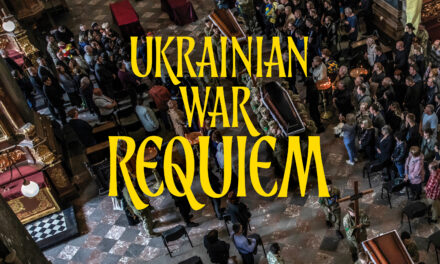review by Erica Gallup
After two years of difficult work, the adaptation of Mary Shelly’s Frankenstein by Alberta Ballet’s artistic director, John Grand-Maitre, hit the Edmonton stage at the Jubilee on Thursday, October 31. The horror ballet, premiered earlier in the month in Calgary, thrilled the Halloween night audience.
As darkness blanketed the city, the Northern Jubilee Auditorium was crawling with patrons dressed in spooky costumes. Devils, animals, and royalty alike, were all enjoying drinks and getting their photo taken at the prop booth while they waited for the performance to begin. Somewhere in the busy room, someone was conducting a costume contest, and there was a child-like sense of excitement in the air as everyone jostled each other to take their seats and find out who won. A Frankenstein monster and his bride stole first place, which was a fitting pick for the occasion.
One of the new aspects of Grand-Maitre’s adaptation is that his story is set in the modern era. Frankenstein’s home is in Florida, rather than in Europe, he attends Harvard University, and for his honeymoon he travels to Jasper, Alberta. I was intrigued by this new setting, and how horror was going to mesh with such a beautiful art form like ballet.
The ballet began with a startling shriek in the music, followed by a deep bass that rumbled in my chest. There was a sense of uneasiness felt among the audience, even before the stage lit up to reveal a blizzarding mountainous backdrop surrounding a meteorologist shack far in the Yukon Rockies. It was a striking display created by videographer Adam Larson, and the use of both a front-stage and rear-stage projection created a three-dimensional cinematography element that I was not expecting to see.
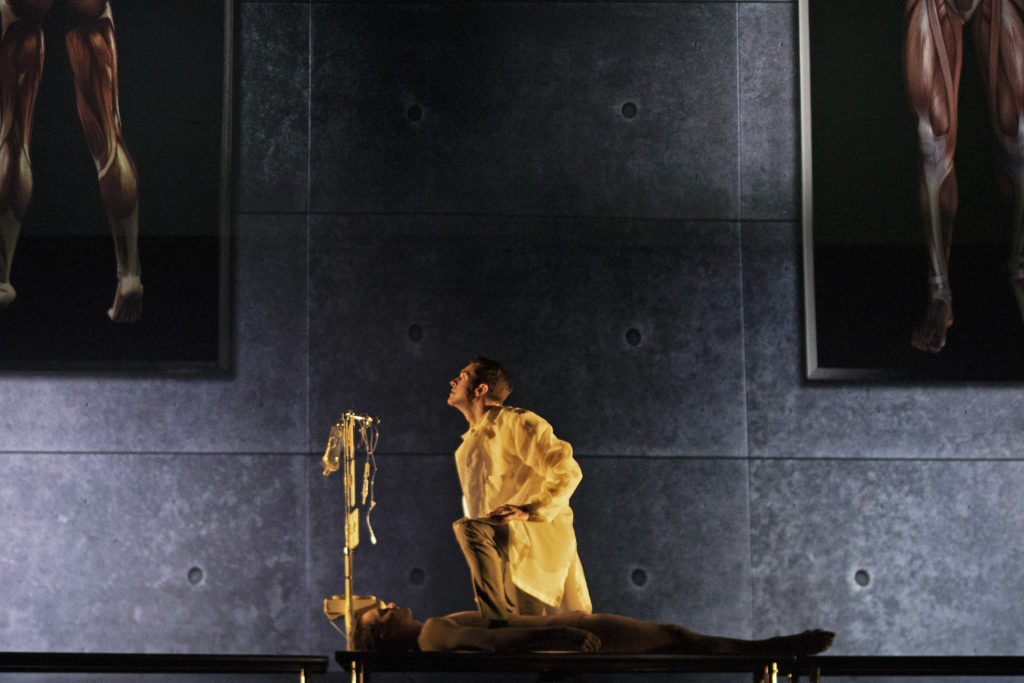
Throughout the entire performance, the supporting components continued to draw me in. In a few scenes, the rear projection screen displayed where the characters were located on google maps, and the audience got to watch them lift off and land in the next setting as an airplane passenger warning spiel rang in the speakers. Inside the Mar-a-lago home was another sight to behold. Large, white pillars descended from the ceiling, and out of the windows at the back of the stage, we could see clouds or precipitation blowing by.
Along with the physical sets (designed by Guillaume Lord), the music also played a huge role in rounding out the production. The dark ambiance, metal drone, and classical music pieces compiled by conductor Peter Dala caused my hair to stand on end. During the creation of the monster scene, I would be surprised if there was a single person that didn’t feel anxious when the music sounded. It felt like your own heartbeat was echoing in your ears.
The lighting was eerie, just as you’d expect from a secret lab, and the blood-spattered plastic tarp helped cement the terrible nature of what Victor was doing. Victor (Kelley McKinlay) was the only dancer on stage besides the monster (Zacharie Dun) who was lying on the operating table. Without the encapsulating supporting art, the scene wouldn’t have filled the stage like it did.
As Victor danced to the thrilling orchestral accompaniment, I could feel all his demonic excitement, apprehension, anxiety, and lust for vengeance on the Angel of Destruction as he flew across the stage, both graceful and mad. Some of his steps were jerky, uncharacteristic of traditional ballet, but it was the perfect way to place ballet in the horror genre.
And when Victor finally electrocuted his monster to life, and the strobe lights and thundering music diminished to reveal his creation, Zacharie Dun’s dancing horrified in the best way possible. He convulsed, and twitched, and rolled around doing well-choreographed floorwork until he gained the ability to limp on his freshly constructed feet. It was creepy. Exactly what I was hoping for.
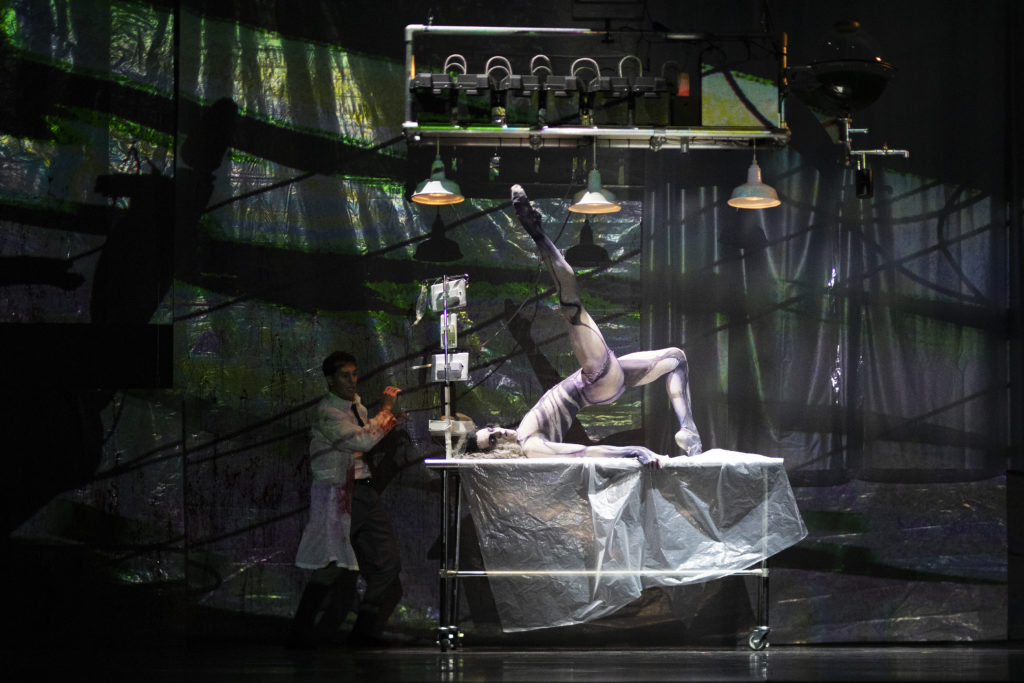
This performance was the Alberta Ballet’s first time using surtitles, and it was the right choice. A screen was located just above the stage where sections of dialogue and names of locations were presented. Audiences would have struggled to completely understand the scenes being danced in front of them if the surtitles were absent. The only downfall to them was that whilst reading along, I missed some of the dancing; but that doesn’t deter me from believing they were necessary in this ballet.
The only component that was missing in this performance was the large ensemble dances that are commonly found in ballet productions. There was one, in the first act, when numerous Harvard students gathered around a cadaver and danced while their professor taught. The scene was explosive! Lights flickered while the dancers leapt around the lab table in the centre, their synchronicity never failing, even when the steps were harsh and jolted. I absolutely loved it.
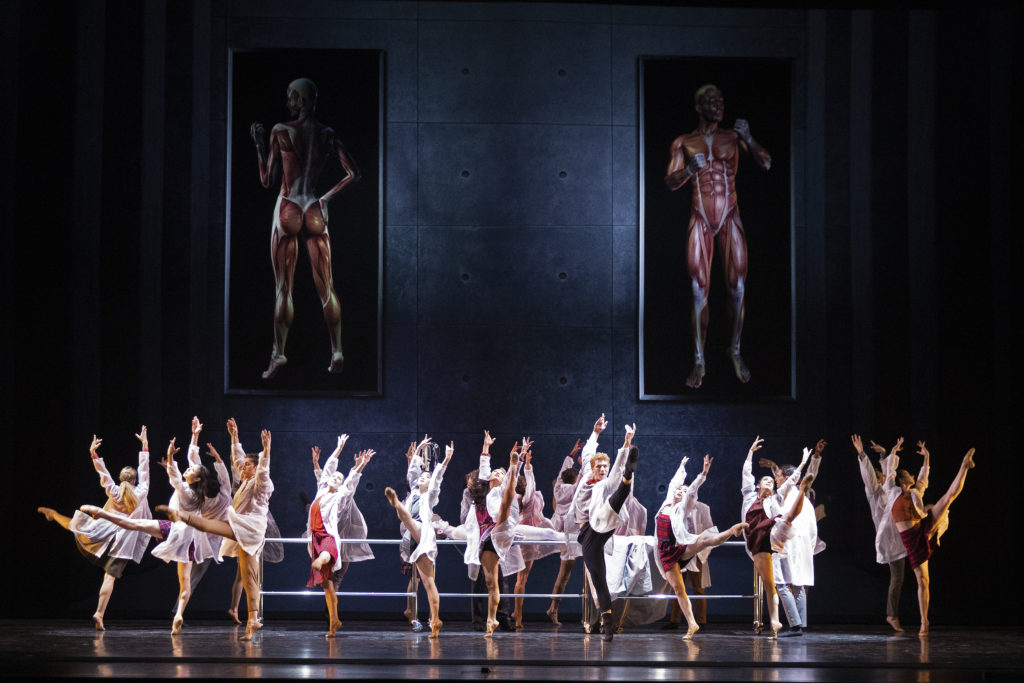
I was looking forward to more synchronized ensemble scenes later in the production and was saddened when they didn’t return. There were, of course, other dances that contained more people than just the main cast, but most of those scenes had pairings doing contrasting dances with one another. While the dances were beautiful and effectively changed the pace of the stream of solos and duets, I still couldn’t help but wish that the whole group would join them on stage and move together once again.
Even so, the small cast didn’t take away from my enjoyment. Every scene continued to be larger than life – no matter the number of dancers on stage – because of all the wonderful supporting components that worked to create a cohesive production.
Grand-Maitre succeeded with his reinvention of the original Frankenstein. He has effectively brought to the forefront that the themes and messages Shelly wove throughout her novel are more relevant than ever with the scientific age we live in. It reminded us all that horror never ceases.
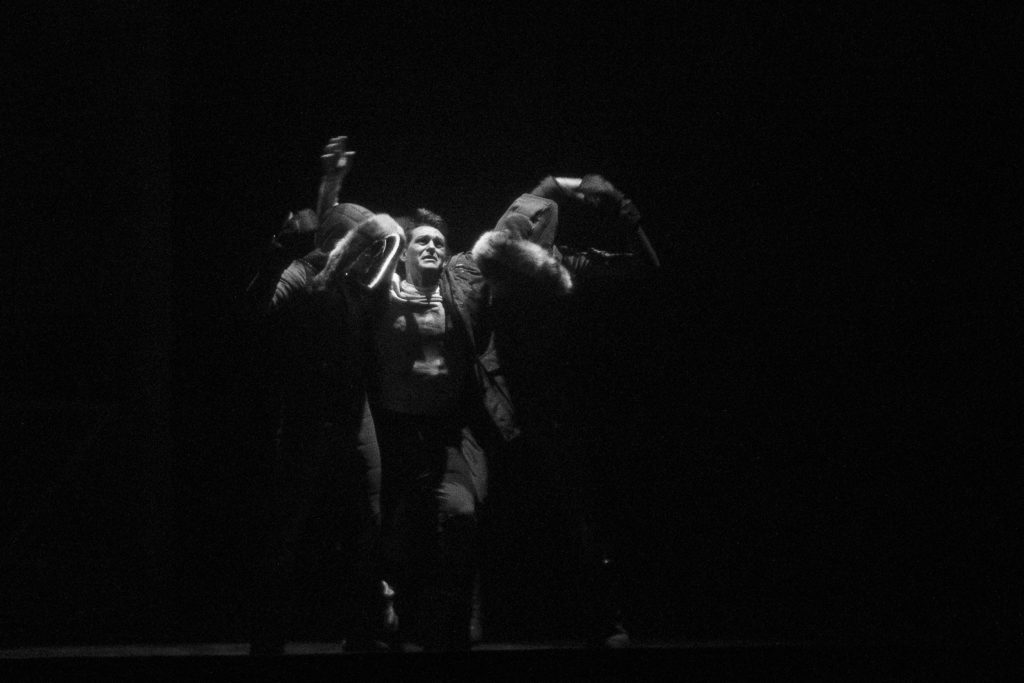
Alberta Ballet
Frankenstein
Jubilee, Edmonton
Thursday, October 31, 2019

